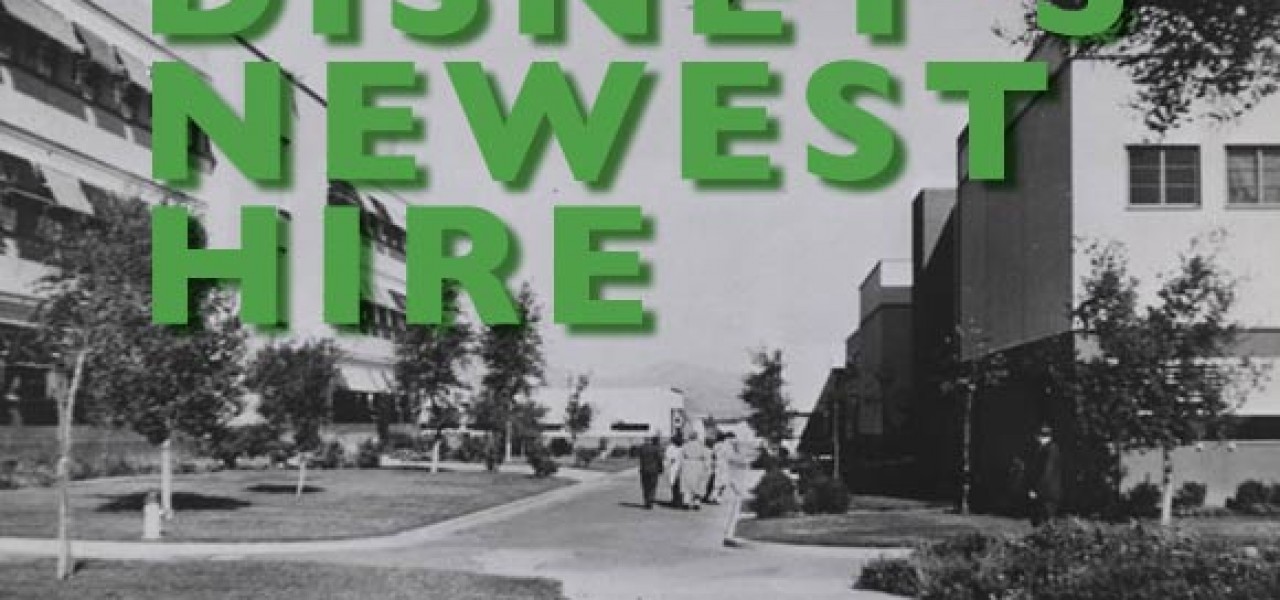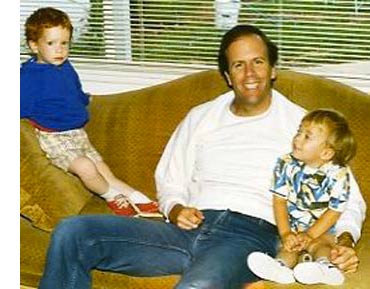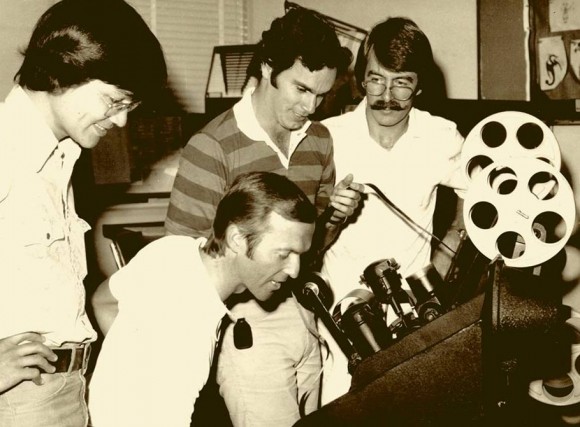

‘Mouse in Transition’: ‘Disney’s Newest Hire’ (Chapter 1)

Mouse in Transition is the story of Disney Feature Animation—from the Nine Old Men to the coming of Jeffrey Katzenberg. Ten lost years of Walt Disney Production’s animation studio, through the eyes of a green animation writer. Steve Hulett spent a decade in Disney Feature Animation’s story department writing animated features, first under the tutelage and supervision of Disney veterans Woolie Reitherman and Larry Clemmons, then under the watchful eye of young Jeffrey Katzenberg. Since 1989, Hulett has served as the business representative of the Animation Guild, Local 839 IATSE, a labor organization which represents Los Angeles-based animation artists, writers and technicians.
New chapters of Mouse in Transition will be published every Wednesday exclusively on Cartoon Brew.
Chapter 1: Disney’s Newest Hire
On a warm October afternoon in 1976 I was sitting in a third-floor animation office of Walt Disney Productions. A gray-haired man with wire-frame glasses sat behind a neat desk, smiling tightly at me. He looked like a Topeka pharmacist.
His name was Don Duckwall, administrative director for Disney Feature Animation, and I sat across from him thinking: Don Duckwall? Seriously? Does Disney have an executive someplace named Mick Mousewall?
Duckwall shuffled papers. “Steve? We’ve decided to hire you as a story trainee. You’ll have three months to develop some practice projects and, uh, show us what you can do. Then the department review committee will evaluate your work and decide if we hire you full time. You start Monday.”
And the following Monday I showed up for work skittish as a caffeinated schnauzer. I needed a job badly, but would I make the three-month cut? Would I fit in? I had not a clue.

In the mid-seventies, Walt Disney Productions was pretty much as it was when Walt died in the mid-sixties. The place still a small, sleepy movie studio that turned out a handful of live-action comedies, the occasional animated feature, and a once-a-week TV anthology. There were manicured flower beds and lawns surrounding art deco buildings that had been constructed on the eve of World War II. There was the sprawling animation building in the center of the lot, still housing executives, producers and animators. But, except for the amusement parks, Disney remained a relatively small player in Hollywood. There were no Clint Eastwoods or Paul Newmans working on the lot. The studio was beneath the big stars’ notice.
Mr. Duckwall showed me to a third-floor office the size of a walk-in closet that contained a small desk, two chairs, and a Selectric typewriter. My job was to find kids’ books in the studio library and mold them into treatments and scripts that would be reviewed by a training panel. If they liked what they saw, I would be retained. If not, I would be terminated after three months.
I was next introduced to my official “mentor,” a blonde-haired man named Don Bluth. Don was a directing animator who looked like a grad student, dressed in a button-down shirt and corduroy Levis. He seemed super busy, but he stopped drawing long enough to shake my hand and tell me to believe in what I was working on and commit to it “with passion.”
I tried too hard to follow Mr. Bluth’s instructions, but I was uptight. I had found out there was another writer-trainee on the third floor, a woman named Jan Norbert. I convinced myself that she would get the long-term gig and I would be back on the street, looking for work.
I came across a couple of children’s books in the second-floor library that I thought could be turned into short scripts and commenced writing them up. Every few days I trotted down to Don Bluth’s office for pointers and feedback. Don kept emphasizing that I should “believe in” and “get excited about” the projects I worked on. I liked the books I had found for my training exercises well enough, but I wasn’t going to be picking my own material when I was assigned to a studio production. What if I was attached to some stinker like Willie the Wacky Wombat? What would I do then? Say, “Thanks, but I can’t get excited about this, give me something else”? I didn’t think Don’s advice about “believing in” each and every feature was entirely practical, but I kept the thought to myself. Better to be a hard-working professional, and leave it at that.
In truth, Don didn’t have much time for me. He was the animation director on a live-action and animated extravaganza entitled Pete’s Dragon, which was the studio’s multi-million dollar effort at a second Mary Poppins, and that consumed nearly all his attention. One morning I was in his office with animator John Pomeroy. John and Don were talking over a scene about Elliot the dragon, and I was in the corner, waiting my turn for an audience.

Suddenly there was a knock on the door and Ken Anderson, Disney Animation veteran and the designer of the animated dragon named Elliot, stepped into the room. He had a neat brown beard, bright blue eyes, and three drawings of the cartoon dragon in his hand. He held them out to Don Bluth.
“Hey, I’ve got a great improvement for Elliot. Purple tassels.”
“Purple tassels?,” Don said.
“On the end of Elliot’s ears,” Ken rejoined.
Don looked at the drawing and smiled broadly. “Purple tassels. That’s great, Ken. Really great.”
Ken smiled back. Pointed at the new colored lines on the ends of the dragon’s ears. “They really make a difference, don’t you think?”
“They’re terrific, Ken. Absolutely. I’ll show the guys.”
Ken nodded, blue eyes brighter than before, and exited. The door snicked shut and his footsteps clacked off down the hall. Don dropped his smile and heaved an exasperated sigh.
“What is Ken thinking about? We can’t add tassels to the ends of the ears. We’re in production. Scenes are in color already. This won’t work.”
John Pomeroy, sitting six feet away, heartily agreed. He and Don bantered back and forth about how unrealistic Ken was being about the revised designs. I had the good sense to keep my trainee mouth shut, but it dawned on me that it might have been simpler to tell Mr. Anderson to his face that the purple tassels were a bad idea and non-starter. It also dawned on me that the simple, direct route wasn’t the way things were done at Disney. It meant ruffling too many feathers that were best left smooth and undisturbed.
Back in my third-floor office, I went on writing my adaptations of the kids’ books, revising them multiple times under Don’s direction. Don was generally vague and noncommittal about my work, and I didn’t think I was getting much of anywhere. And one day at lunch I let my frustration show by blurting that Don Bluth didn’t seem to know much about story. The young animator I was sitting with on the commissary patio went white and pointed at a nearby table.

Where Don Bluth sat eating with John Pomeroy and another animator named Gary Goldman.
Game. Set. Match.
Whatever blood I still had pumping through my heart drained into my feet. Don must have overheard. I was sure my Disney career was over before it began. Shaking with fear and anxiety, I returned to my tiny office and waited for the inevitable phone call:
“Sorry it didn’t work out, Steve. Pick up your last check from Human Resources, turn in your gate pass, and drive safely.”
But nothing happened. Either Don hadn’t noticed my snotty remark, or had chosen to ignore it.
More pages, more reviews, and my ninety-day “trainee” period wound to its end. I turned in the final drafts of my treatments and scripts, and waited for the review committee’s verdict. Don Duckwall told me he would let me know if I was being hired permanently “no later than Thursday.” But Thursday came and went, and then half of Friday rolled by.
Still nothing.
On Friday afternoon, as I sat brooding in my little office, digesting the fragment of chicken pot pie I had managed to consume in the studio commissary, Don stuck his head through my door.
“We’ve decided to keep you. We’re letting the other trainee go.” Long pause. “So now I guess it’s up to us to find something for you to do.”
Find something for you to do. Those words didn’t sound too encouraging, but I was happy enough with the rest of them. Duckwall pulled his head from my half-open door, and I stared numbly out the office window, gazing at the Disney employees hurrying back and forth on Dopey Drive.
So where was I going from here?

.png)